Test: Fendt Lotus 1020T
Farm Trader test drives the Fendt Lotus 1020T in a variety of conditions
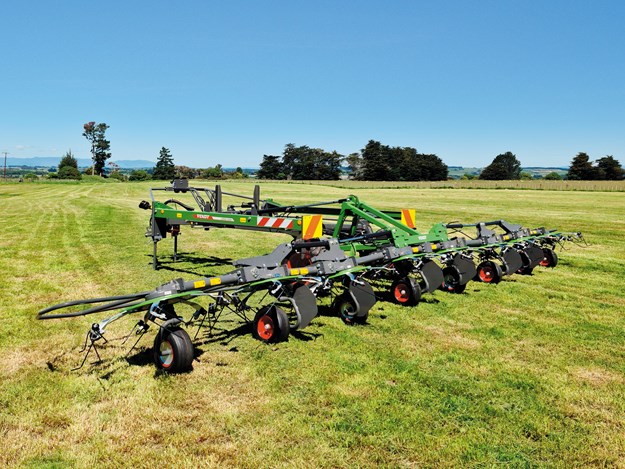
Tedders are an interesting piece of equipment. Some seasons they aren’t used excessively, while in another season, a tedder can be the difference between what’s s best described as green sludge and quality silage. The tedder also tends to get an absolute hiding; it’s the first machine to get dragged around ex-winter paddocks, with every hoof print trying to shake it to its very core, along with ‘up and coming’ operators often cutting their teeth on these machines.
Recap – you have a machine that’s vitally important to creating decent quality early silage but which gets an absolute hiding, and its usage can vary greatly from season to season – all things considered, this sounds like a ‘buy once, buy right’ situation.
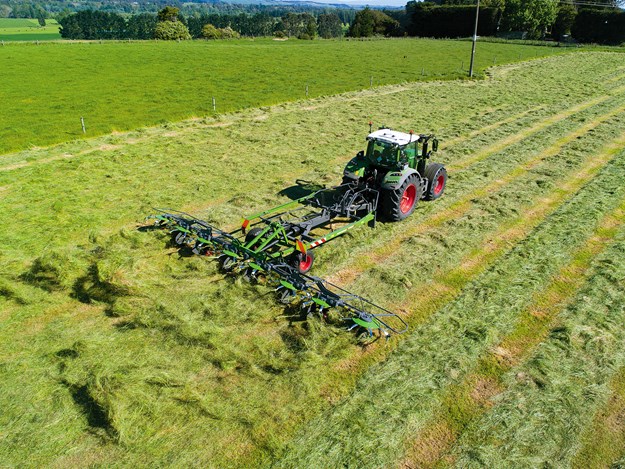 |
|
Impressive movement of heavy spring grass
|
Luckily, this month we have a new (but old – I will explain later) Fendt Lotus 1020T gracing our shores for a season that could be described as wet, cold, late, and congested, although, I’ve spoken to many contractors who have used some more colourful language to describe it.
The Fendt Lotus 1020T is really a rejuvenated Lely Lotus 1020, following AGCO’s acquisition of the Lely brand. The perception was that this tedder was so good with just a few changes needed, and with these made, the Fendt badge only adds to the mystique of this highly regarded machine.
Test time
We revisited the Pilet Contracting team near Marton, where we also recently checked out the new Stewart trailer. This time we managed to have a crack with Craig Pilet’s new Fendt tedder – on its maiden voyage too. What better way to wear some paint off the tines than in a heavy Manawatu silage crop on a stunning sunny day? Craig is no stranger to the Lotus tedder. In fact, this is his third Lotus 1020, and after 30 years contracting, he still regards it as the best tedder on the market.
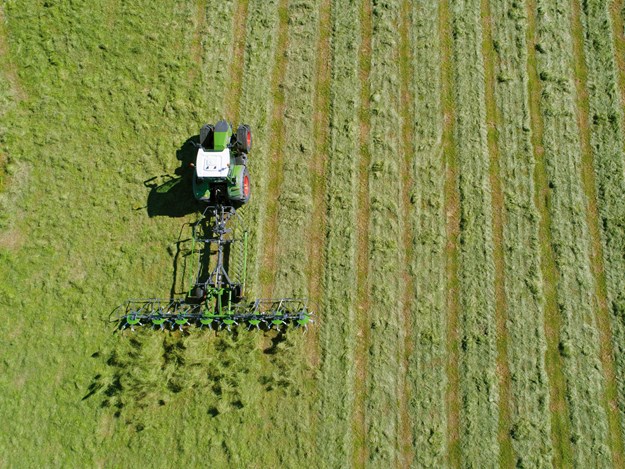 |
|
Drone footage shows the spread pattern of the Fendt Lotus
|
Jaiden’s top tips when considering a tedder
You need to go back to go forward. It’s all about backward speed of the crop that is. The further the crop travels in the air, the better. After all, wet material is heavier than dry crop. As a result, it’s thrown further away and comes to rest on top of the dry crop, creating more effective drying. Watching a great tedder from drone footage is mesmerising (I know I’m weird): the ‘fan effect’ from the air gives a great visual representation of this.
- Rotation speed of the tines: ideally 400–450rpm
- Tine position as well as the amount of steel in contact with the crop
- If tedding is done too aggressively, you see a cloud of dust – literally –either soil contamination or more worryingly, precious crop material being pulverised.
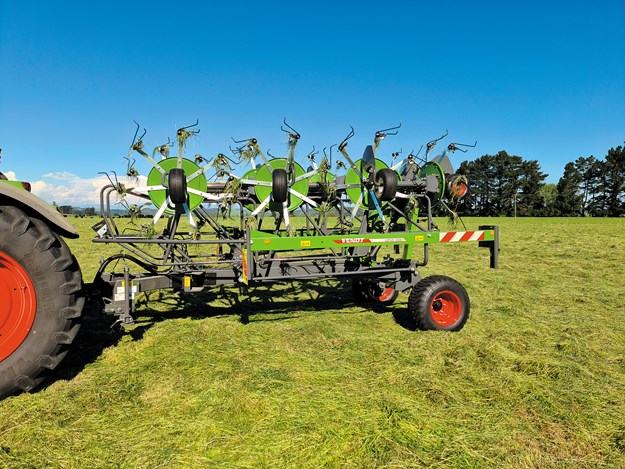 |
|
Fast and safe transport position
|
Machine features
Tines
On the Fendt Lotus, the trailing tine position means the grass gains speed more gradually. The position of the double hook tine (90-degree ‘hook’) and the combination of the tine and rotor angle result in a long ’flight’ for the crop.
In a nutshell, how this works is that the top tine is shorter than the bottom one. The bottom tine is closer to the ground, which picks up the heavier material and flicks it up, while the second shorter tine picks up the top drier material. While it’s in the air, the top tine also gives another ‘flick’ of the wetter material on its way out the back: think of it as a two-pronged grass attack.
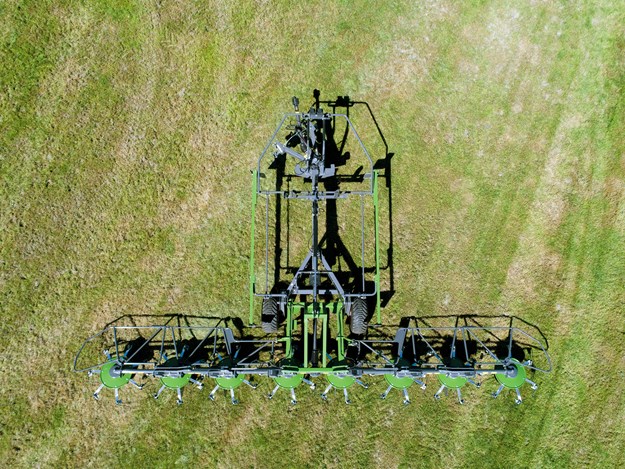 |
|
This is great example showing the transport wheels also controlling the majority of the contour following
|
The hook design also by default protects the tines from metal fatigue because stresses in the materials are eliminated as the two-pronged grass attack is doing the work, not sheer force. The hook tines also have five coils, which make them strong but also easily flexed – again resulting in fewer broken tines. This isn’t just some snazzy sales pitch. A quick look at the older Lotus machines in the Pilet Contracting fleet and some of the ‘hooks’ on the tines have worn to a point, a testament to both the amount of work done and the durability of the tines.
You may look at the photos and think the Lotus has cute mudguards. In fact, this is the Anti crop-Winding System (AWS). Naturally, when you run a tedder through heavy crop, some of it wants to tangle around the wheels and axles. With the AWS, grass falling from the wheels lands onto the specially shaped curve in the wheel axle before falling to the ground.
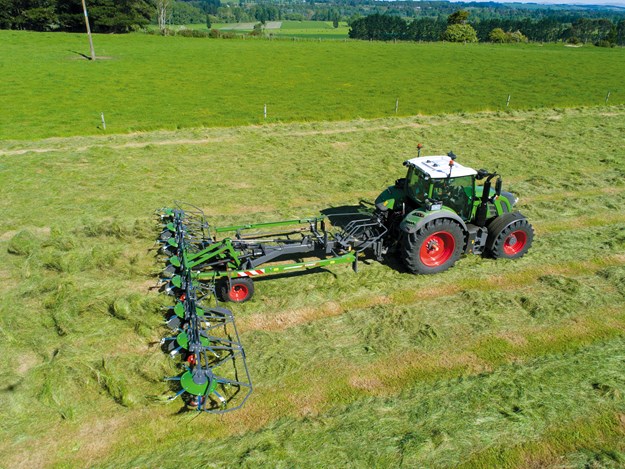 |
|
The steep angle of the rotors allows grass to be flicked high for better drying
|
Rotors and driveline
With the Lotus tedder, the tedding angle is set by adjusting the ground wheels. There are five slots, easily adjustable with a simple pin. The working depth is then adjusted by using the wind handle, a great feature, and making it remarkably easy to adjust a 10.2m machine. The rotor and tine design allow the machine pitch to be slightly more forward. This means less gap between the rotors for crop that would otherwise be missed and also allows higher ‘flicking’.
Another notable feature of the Lotus tedder is that for a 10-metre machine it only has two main pivot points. This makes for fast folding and unfolding and means the machine can retain a lot of strength. The pivots themselves have cast housing fitted with hardened bushes. The driveline passes through these pivoting points with double universal joints, which rotate at double the rpm, in turn, halving the load. These double universal joints allow for great contour following and require little maintenance, as the grease nipples are easily accessible due to being located on the outside.
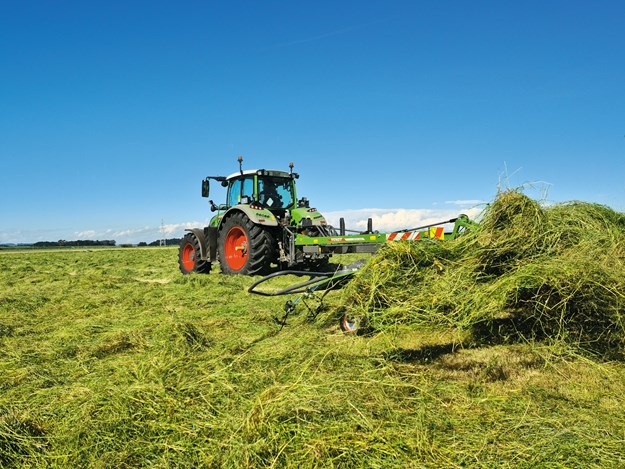 |
|
The heavy wet grass ends up on top allowing faster dry time
|
The headland kit is a simple cast arrangement with a spring and two ‘notches’ that allow you to simply move the tine back in towards the rotor. This then doesn’t flick the grass out and into the fence. While this can be done on all the rotors, the best practice remains that you just do the very left-hand rotor, you then drive anticlockwise around the paddock, and for the rest of the paddock you turn around and drive clockwise. This means you don’t have to hop out and re-do every paddock; it simply stays like that. The alternative I suspect is that it would never get adjusted.
Chassis and transport
Swaying can be a problem with tedders, particularly as they get wider, as well as on trailed ones, which are drawbar-mounted. The Lotus uses triangular construction; a theoretical pivoting point is created halfway along the tractor to ensure that the tedder follows the tractor perfectly around bends or at field headlands.
In practice, it works well. I am sceptical of these theories, but it followed the tractor brilliantly. The halfway pivot and two-point linkage connection allowed easy height adjustment and followed the tractor more like a rear steering swather into the corners than a trailer, leaving no leaf unturned. On the road, again the two-point attachment meant it didn’t bounce up and down in the drawbar, while the large 380/55-17 transport tyres gave a stable ride on the road and would be great in marginal early spring ground conditions.
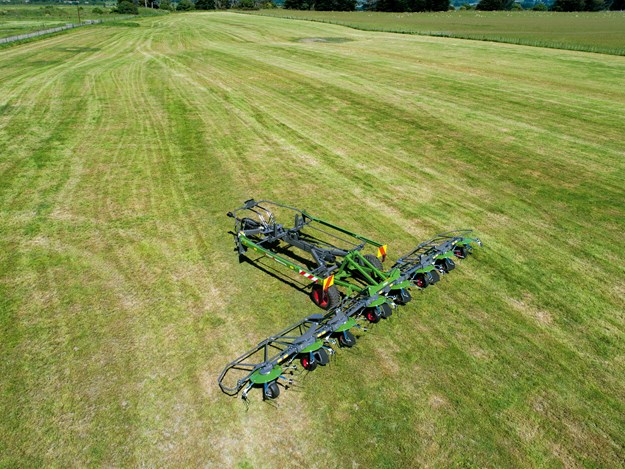 |
|
Being equipped with its own chassis guarantees a smooth run and impressive ground adaptation
|
Summary
While I was impressed at the machine, my opinion is far less relevant than the fact Craig Pilet, who has been contracting for 30 years, has owned three trailing Lotus machines and a mounted machine of the same stable. This speaks volumes for the machine, both in terms of build quality and the ability to work in a wide range of conditions to the highest standard. It’s proof that when a contractor finds a quality machine that ticks all his boxes, he sticks with it.
Fendt Lotus 1020T specifications
|
Working width |
10, 20m |
| Transport width | 3m |
|
Transport length |
5.20m |
|
Power requirement |
44/60kW/hp |
|
Rotor number |
8 |
|
Tine arms per rotor |
7 |
Pros
- Hook tine is genius
- Trailing pivot point halfway down the chassis stops ‘swaying’ and it tracks beautifully behind the tractor
- Strong construction
- Proven design
- AWS stops the crop wrapping around wheels and axles
- Two-point linkage makes the machine more stable in the paddock and on the road
- Cast pivots and double UJ driveline
- Easy tine height and pitch adjustment
Cons
- The headland kit isn’t the most user-friendly
- The hook tine does keep more crop on it at the end of the job over straight tines
Find new and used farm machinery for sale in NZ
Keep up to date in the industry by signing up to Farm Trader's free newsletter or liking us on Facebook











.jpg)
.jpg)
.jpg)

.jpg)

